Hello blackkite,
I wrote the article (on Old Machine Press) you referred to two posts above. I am not an expert, but I will outline my thoughts on the He 119 identities. I think this is an issue were someone like William Green got it wrong the first time and it has been repeated again and again. But, I could easily be wrong too.
V1 had elliptical wings (leading edge) and what appears to be a landing light in the left wing. The exhaust ports seemed to be angled with each one higher on the fuselage than the one preceding it. The fuselage has no windows or top hatch for the radio operator.
V2 had the same elliptical wings (leading edge) with a landing light in the left wing. The exhaust ports seemed to be straight (but it is hard to tell). The fuselage definitely does have windows and a top hatch for the radio operator.
V3 has (big floats and also) a wing with a straight leading edge and no landing light. The exhaust ports definitely seem to be straight. Like V2, the fuselage definitely does have windows and a top hatch for the radio operator.
D-AUTE, the record plane many believe is V4, has what appears to be elliptical wings (leading edge) with a landing light in the left wing (just like V1 and V2, but not like V3). The exhaust ports seemed to be angled with each one higher on the fuselage than the once proceeding it (just like V1 and possibly V2, but not like V3). The fuselage has no windows or top hatch for the radio operator (just like V1, but not like V2 or V3).
It would seem that D-AUTE possess all the characteristics of V1 (except radiator). It does not possess many of the characteristics (wing, exhaust, radio operator) of V3. It is generally accepted that V4 flew before V3, but can this account for all the V1 similarities and V3 dissimilarities?
And now consider the timeframe. V1 flew in June 1937. Could V1 go through flight testing, V2 and V4 be built with a new radiator, radio operator station, a new wing for V4, V4 be flight tested and made ready for the first record run all by late November? All that in about five months time seems a little tight, especially when you consider that the He 119 was built in secret and only reveled to the authorizes after V1 was flying.
To me, given the time frame and the similarities V1 had with D-AUTE, it seems more likely and makes more sense for V1 to be D-AUTE (the record plane). V1 having five months to go through flight testing and get a new radiator installed seems much more reasonable than two other unique He 119s being built and tested in the same time frame.
But like I said in my article, given the secrecy under which the He 119 was built, the propaganda subterfuge surrounding the record flights, and the destruction of German documents during World War II, the exact aircraft identities as well as the number built may never be definitively known.
Here is what Volker Koos says (from http://www.whatifmodelers.com/index.php/topic,21627.msg342718.html#msg342718)
Quote
In the Flugzeug-Entwicklungsprogramm (FEP, i.e. aircraft development program) of the RLM (1.7.1936) for this reason the He 119 V-1 and V-2 are listed as fast bombers. But it is already said, that this Heinkel aircraft would not be ordered in greater numbers. The FEP of 1.10.1936 gives some more details. Here the He 119 V-1 (Wnr. (c/n) 2402), V-2 (2403) and V-4 (2405) are planned as fast bomber prototypes and the V-3 and V-5 (2404 and 2406) are listed as prototypes for the world flight. At that time also a pre-series of seven fast bombers was planned. Already in January 1937 the number of He 119 prototypes was reduced to three, that should be used for engine-trials. The FEP of 1.4.1937 omitted the idea of the world flight. Only the He 119 SV-1, SV-2 and SV-3 (Wnr. 2402, 2403 and 2405) are listed as engine-testbeds. Later the c/ns were fitted to the row, so that the V-3 became the 2404. (SV means Sonder-Versuch, i.e. a V-machine für special tests).
also,
Quote
After the first flight in June 1937 and the above mentioned record-flight in November, the He 119 V-1 was again prepared for a record-flight, because the first record was beated on December 10 by an Italian Breda 88. During the second record-flight attempt on December 16, 1937 the He 119 SV-1 (Wnr. 2402, D-AUTE) crashed in Travemünde. The accident was caused by a failure in the tank switching. Nitschke suffered hard injuries, Dieterle only a little bit. (In the literature it is always said and copied again and again, that the record machine D-AUTE was the V-4, but that is total nonsense, because at that time only the V-1 was built and flown.)
and:
Quote
The number of the built machines is not exactly known.The RLM gave the export permission after the procurement was rejected. But at Heinkel they tried further to build a bomber on the base of the He 119. The sixth of such projects became the He 119 SV-4. It was planned with the DB 610 (two connected DB 605), a four-bladed airscrew of 4,2 m Diameter, a 3 man-crew (one in a cabin behind the engine) and two 7,9-mm-guns MG 81 and further two 13-mm-guns MG 131 in the cockpit. A further MG 81 was operated by the gunner (third crew-member). The bomb-load of up to 600 kg and another tank of 600 liters ware placed in the fuselage. The planform of the wings was like that of the SV-3 straight not elliptical. The He 119 SV-4 was first flown in May 1940. After seeing the He 119 in Rostock-Marienehe on 1.12.1938 the Japanes Navy ordered two machines. These were delivered in 1941 by ship. Heinkels chief pilot Gerhard Nitschke also travelled to Japan for demonstration of the He 119 and He 100. Both He 119s crashed at landing after short-time testing in Japan. On the base of the He 119 the Japaneses developed the R2Y1 "Keiun" in the flight technical arsenal of the Navy in Yokosuka. Construction leader was Shiro Otsuki. The two He 119s delivered to Japan were with great probabiliy the SV-2 and SV-4. In Japanese Literature the engine of both machines is said to be the DB 606. So it could have been, that the SV-4 never had the projected DB 610. (But in Japan often the older and often false German literature is copied too.)



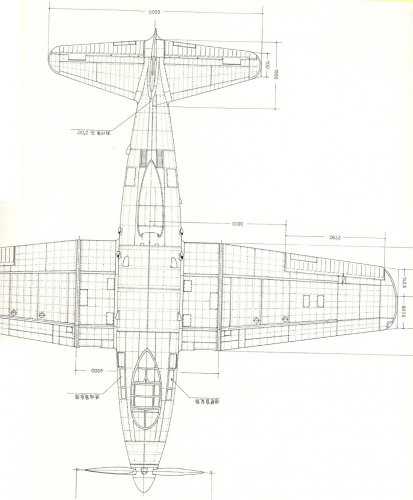
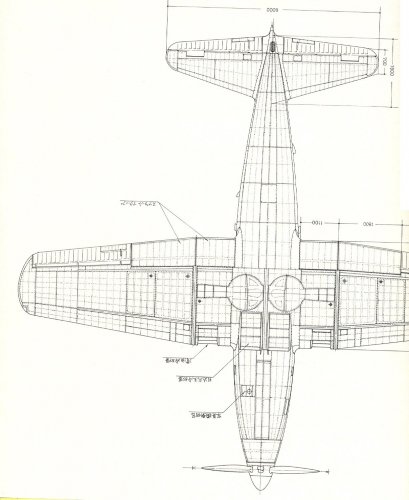
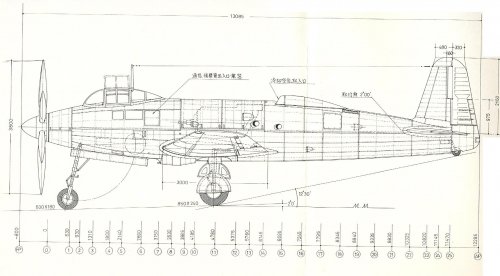
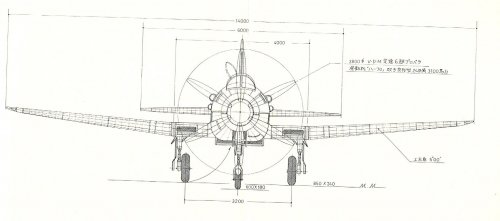
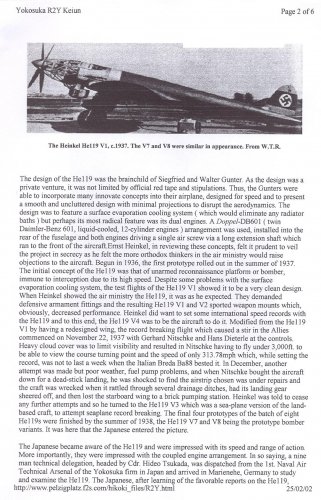
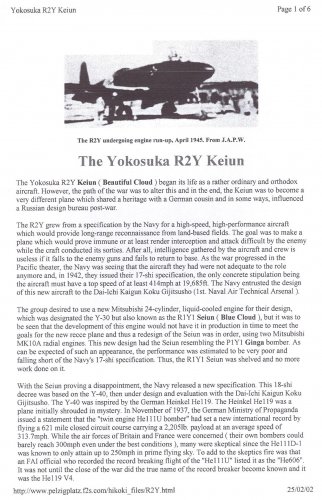
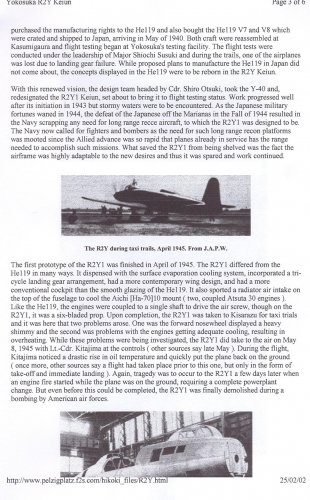
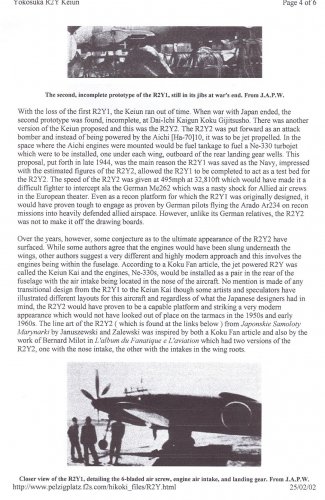
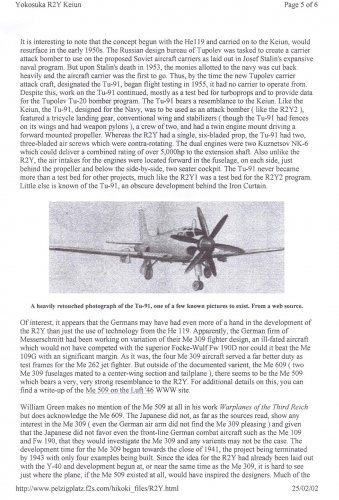
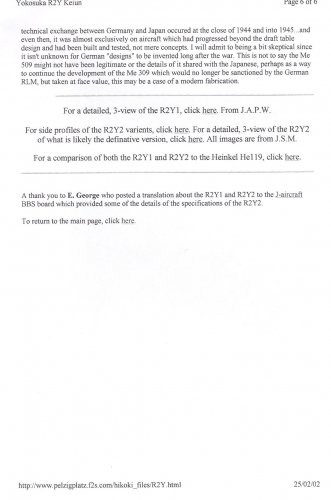
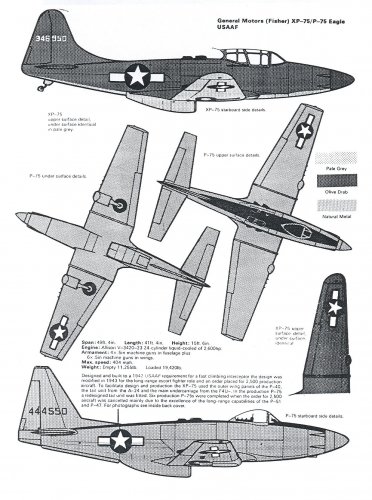
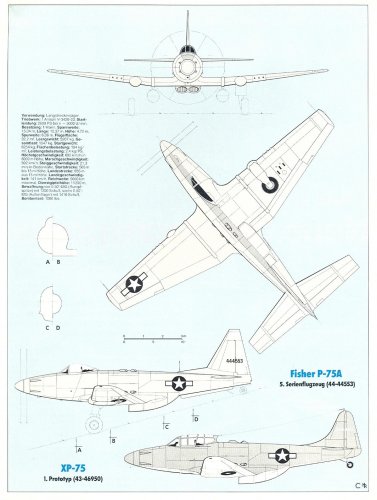
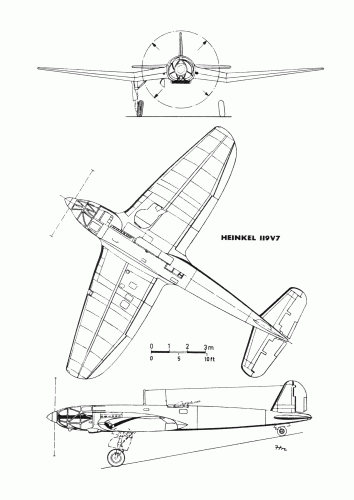
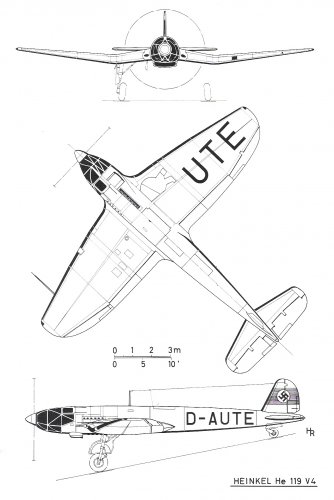
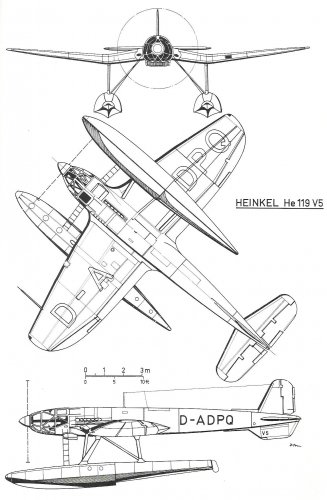

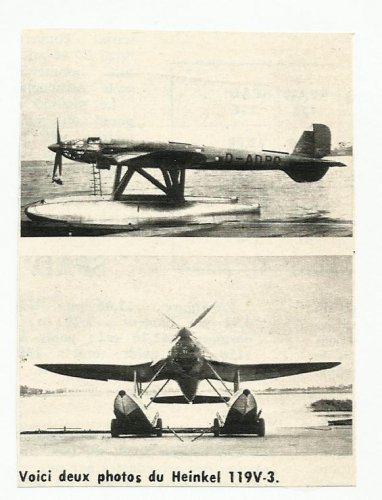
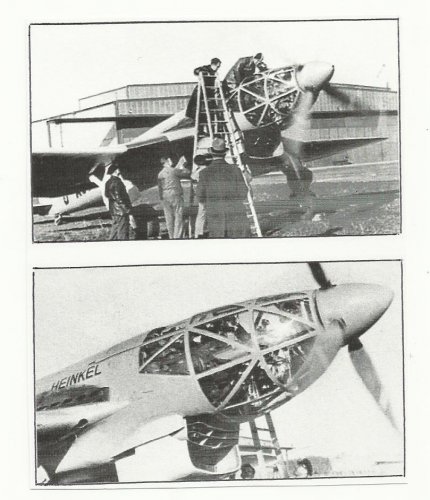
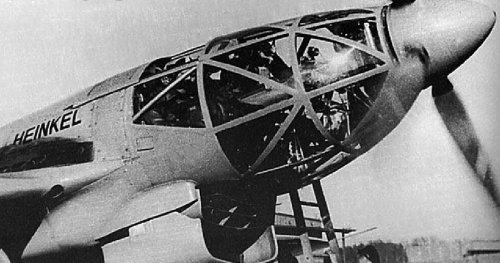
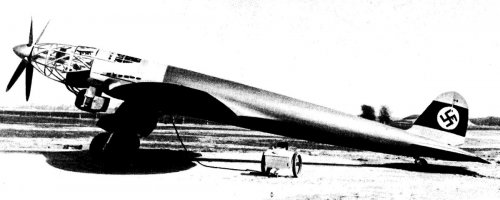
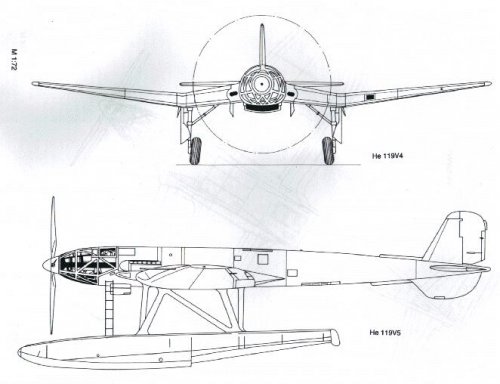
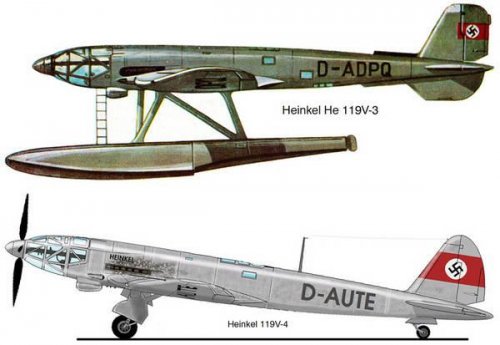
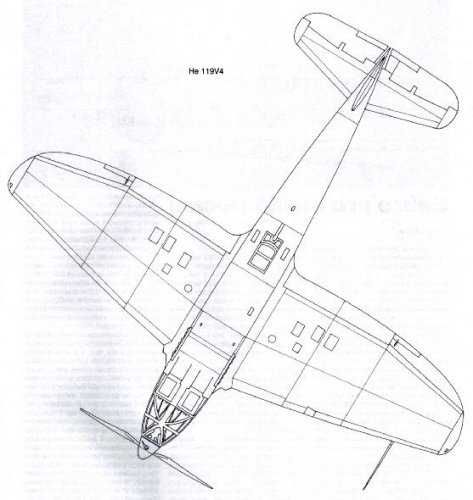
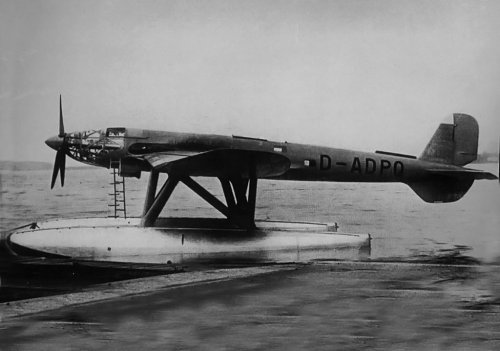
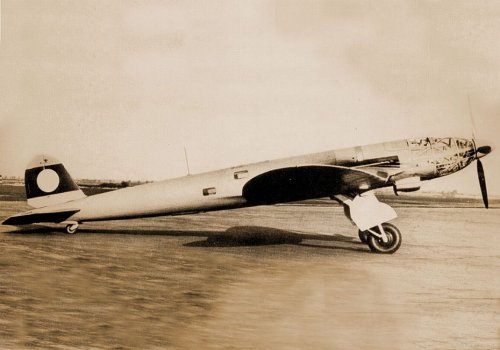
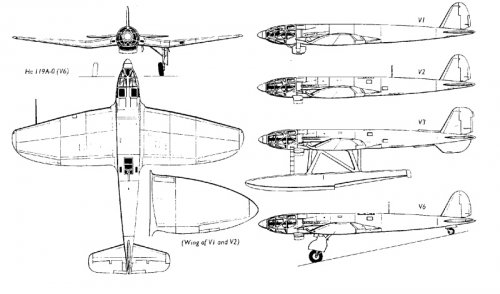
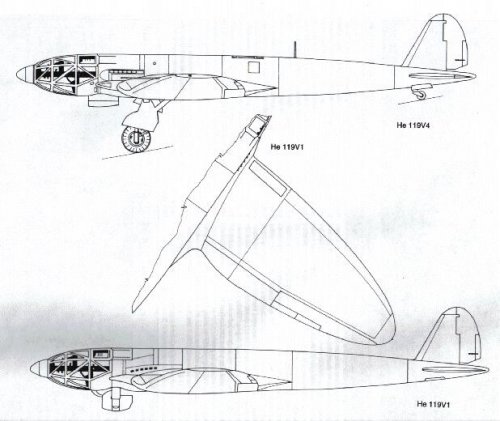
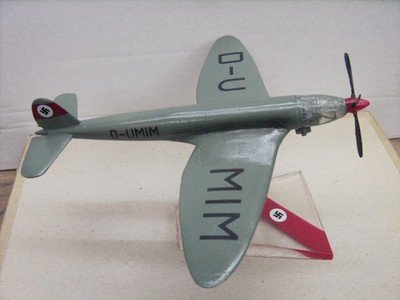
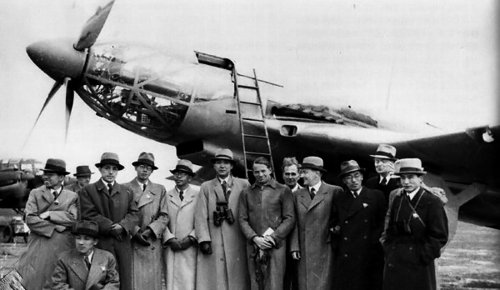
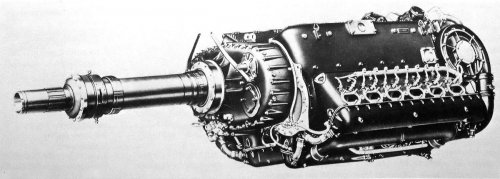
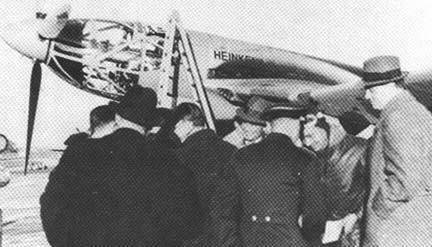
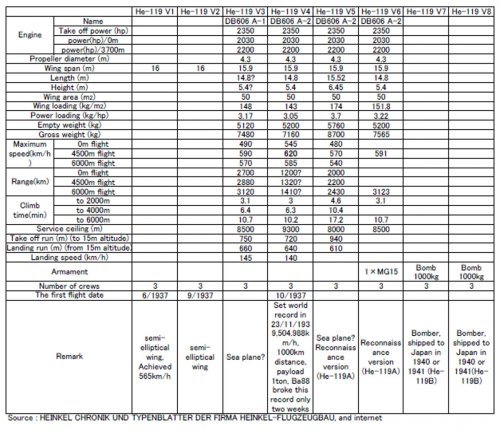
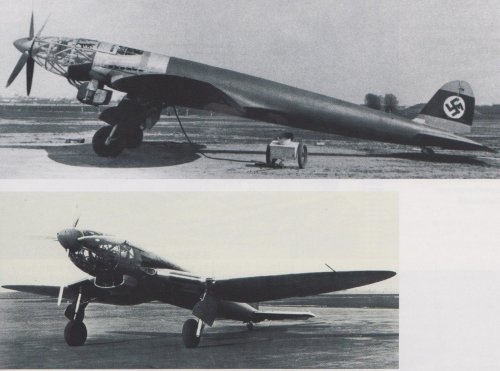
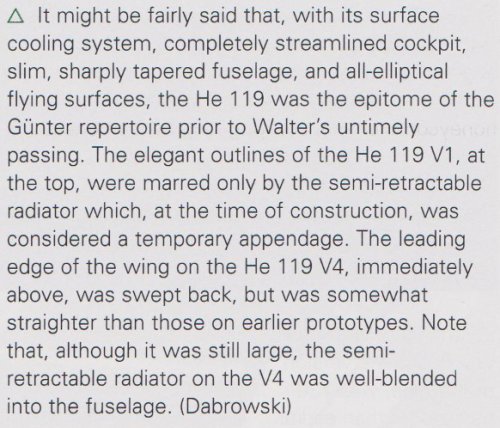
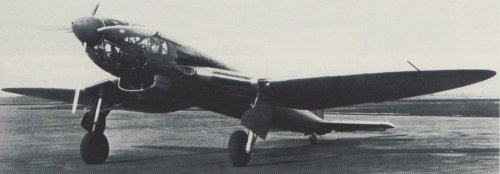
![He-119 V4[1].jpg](/data/attachments/76/76846-7b32b71631f531c705d599fdd8a9b08e.jpg)